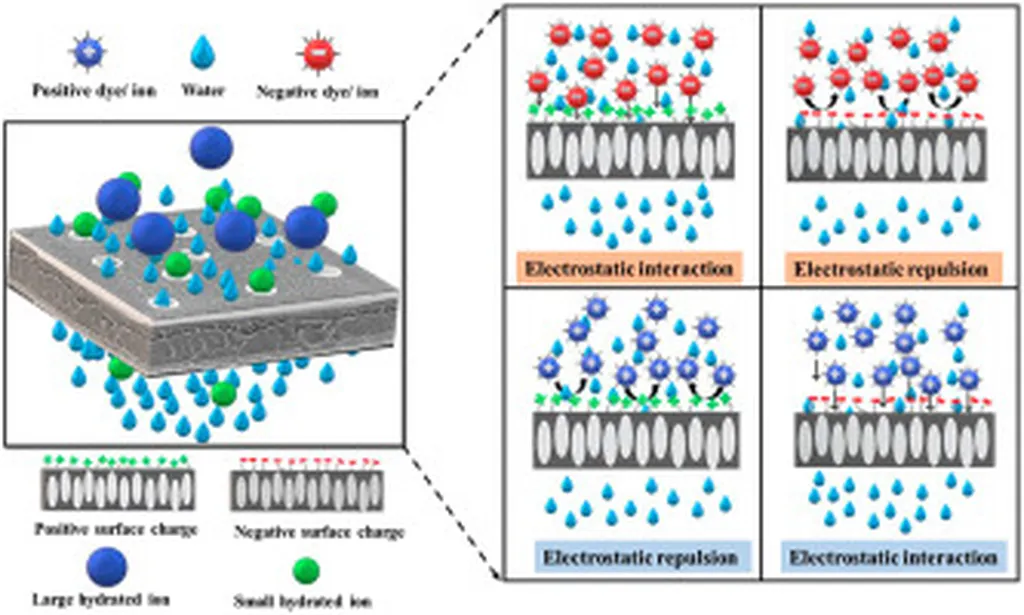In the quest for sustainable and efficient environmental protection solutions, a team of researchers led by Yabin Yang from the Yantai Environmental Sanitation Management Center in Shandong, China, has made a significant stride. Their work, published in the journal *Cailiao gongcheng* (which translates to *Materials Engineering*), introduces a novel photocatalytic membrane that could revolutionize the treatment of high-salt dye wastewaters, a persistent challenge in the energy and textile industries.
The research focuses on silver phosphate (Ag3PO4) nanoparticles, known for their exceptional light responsiveness and robust catalytic properties. However, these nanoparticles tend to aggregate and are difficult to recover, limiting their practical applications. To overcome these hurdles, Yang and his team employed sodium alginate (NaAlg) as a carrier to disperse Ag3PO4 into an aqueous solution, creating a casting solution. They then used oxalic acid (OA) as a crosslinking agent to fabricate OA@NaAlg@Ag3PO4 photocatalytic membranes.
One of the standout features of this membrane is its remarkable salt tolerance. “The membrane maintains its integrity in a 10 g/L NaCl solution, whereas the calcium alginate membrane exhibits swelling and rupture,” Yang explained. This exceptional salt tolerance is a game-changer for industries dealing with high-salt dye wastewaters, offering a more robust and reliable treatment option.
Under UV light exposure, the OA@NaAlg@Ag3PO4 membrane demonstrated a degradation efficiency of 90% for a 10 mg/L methyl orange solution containing 10 g/L NaCl within just 15 minutes. Moreover, the membrane exhibited a degradation rate exceeding 90% for various dyes, including methylene blue, malachite green, orange G, amaranth red, and rhodamine B. This broad-spectrum efficacy makes the membrane a versatile tool for wastewater treatment.
The commercial implications of this research are substantial. The energy sector, in particular, stands to benefit from more efficient and eco-friendly methods of treating wastewater. The enhanced operability and regenerability of the composite hydrogel membrane, compared to traditional Ag3PO4 nanoparticles, open up new possibilities for industrial applications.
As Yang noted, “The composite hydrogel membrane offers enhanced operability and can be regenerated by recovering Ag3PO4.” This regenerability not only reduces costs but also aligns with the growing emphasis on sustainability in industrial processes.
The research published in *Cailiao gongcheng* marks a significant step forward in the field of photocatalytic materials. By addressing the challenges of nanoparticle aggregation and recovery, Yang and his team have paved the way for more effective and practical applications in environmental protection. As industries continue to seek sustainable solutions, this innovative membrane technology could play a pivotal role in shaping the future of wastewater treatment.

